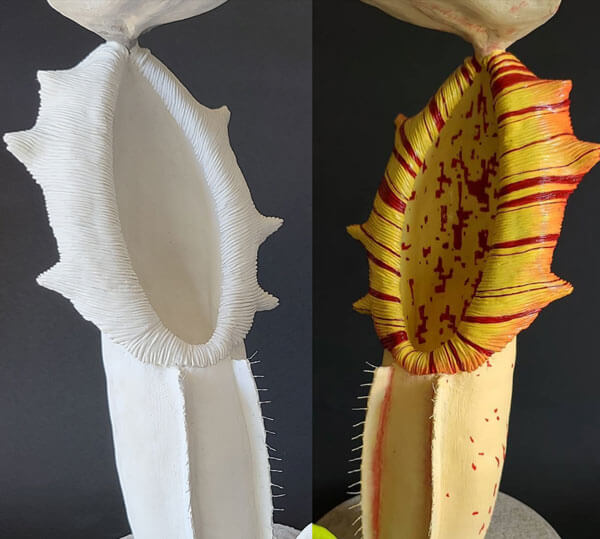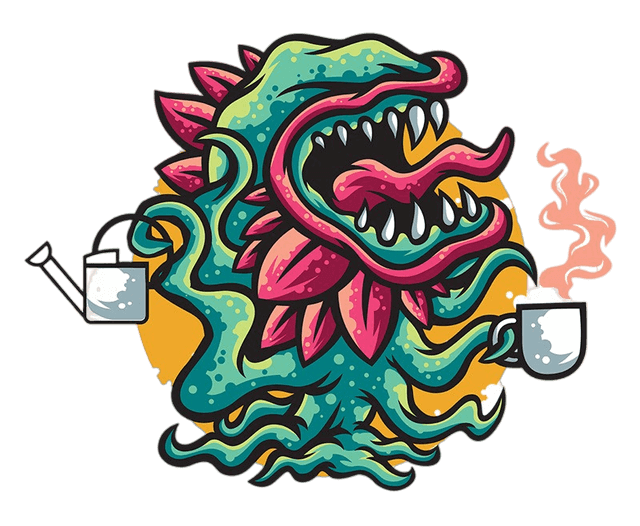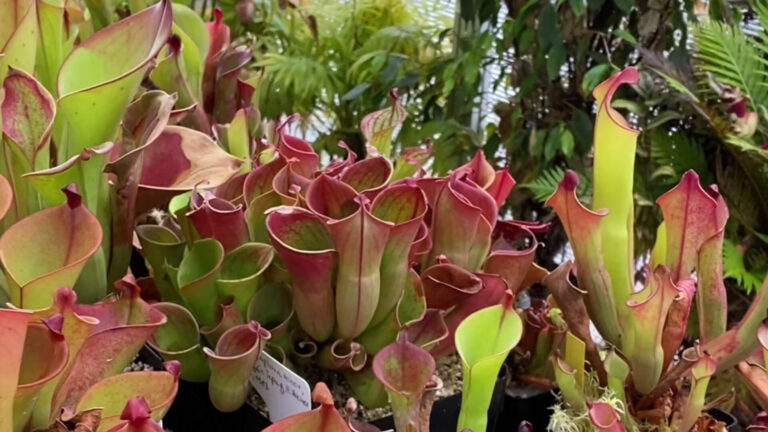Carnivorous plant art you must have seen!
1. Shakim Cooper (Instagram: haddeox2347)

Hey folks! My name is Shakim Cooper, originally from St. Thomas, US Virgin Islands. I suppose you could say I’m a hobbyist turned artist! When I’m not working with my own collection I’m sculpting various carnivorous plants.
What kind of art do you do?
Sculpture and the occasional magnet depending on the season! I use clays, concrete, resins, silicone, and just about anything else I can get a hold of to make my pieces. Often times, my work is centered around Nepenthes where I’m either making just the pitchers or dioramas including a whole plant. I’m slowly branching into the other genera as well. The other carnivorous plants need love too!
Who/What inspired you?
My original inspiration is what I like to call the “CP Grower’s Dilema”. After all your (mostly the plant’s) hard work you end up with a great pitcher or trap that unfortunately doesn’t last forever. Don’t get me wrong, photos are great but I’m definitely not the best with a camera! Rather than take photography lessons, I decided sculpting would be a great way to further appreciate my plants. Aside from that, the desire to showcase all the wonderful wild carnivorous plants without harming their environments is another source of inspiration for me.

How long do you need for one sculpture?
The main factor with time is whether I’m working on an original or reproduction. From initial sculpt to the final paint job, originals can take anywhere between 2-4.5 months depending on how extravagant the subject matter is! Reproductions are usually much quicker, around 1 week up to 2 months if I’m not juggling multiple projects.



2. Rachel Variot (Instagram: carni.art)
My name is Rachel, I’m 27 yeas old. I’m a French girl living in the Netherlands. I have lived in the Netherlands for more than 5 years. I’m working with carnivorous plants, in the biggest carnivorous plants nursery of the Netherlands. At one day we had to trow a lot of plants away. Such a waste! So I wanted to try to preserve such beauty and the best way is to press them ! My grandfather was an artist who used little pieces of paper to make nice collage artworks. I just thought I would try the same but with plants and that is how I began. I make some artwork with pressed carnivorous plants but not only that, I also make jewelry with epoxy gel. Also, keychains and some other stuff. The first artwork I made was for my grandfather’s 80th birthday. I found it so nice ! I was very proud. So I took a picture of it and I post it on Reddit. I was very surprised of the nice comments and positive feedback. Many people want to buy it, and they asked if I had an Etsy account. So I made one (CarniArt)

Pressing this kind of plants can take a few months. Actually it’s very easy, I just use a flower press and some newspaper to absorb moist. The secret is not to use thick plants otherwise it will rot. After the pressing I select the most beautiful ones and a make a collage with it. After that I frame it carefully in a glass frame. Most of my creation are going to America. I always try new things, new side and shape of frame, all kind of carnivorous plants.



3. Madeline von Foerster (Instagram: madelinevonfoerster)

My name is Madeline, I am an American-born painter living and working in Germany. I make paintings. For my oil paintings I use a 500 year old mixed technique of oil and tempera, invented by the Flemish Renaissance masters. My paintings are love letters to our endangered natural world. My painting style was always very precise, but the clarity and detail I wanted was difficult to achieve with oil paint. The Flemish “mixed” technique combines oil glazes with a tempera under painting, allowing for very fine detail combined with the soft blending effects which oil paint provides. The first time, I heard of it, I knew I HAD to learn it. I discovered a class being offered by @professor.phil and signed up immediately. The technique is labor-intensive and requires patience, but the results are unique!


How do you create your wonderful art?
First I make several preliminary sketches, leading to a final drawing. This gets transferred to a prepared panel.
The whole panel is painted with a red tempera layer, called the “imprimatura.” Over this, an underpainting is created in white tempera. You could consider this the skeleton of the painting.
Then the whole painting is covered with an ochre oil glaze, but the underpainting isn’t done yet! — More refinements are added in white tempera, creating dimension and form.
Now finally, I begin painting colors: sometimes with oil color alone, and sometimes adding more tempera if needed (it creates wonderful highlights).
Last, when the painting is finished and dried it can receive a final varnish.
Following pictures by @oliverwachenfeld











